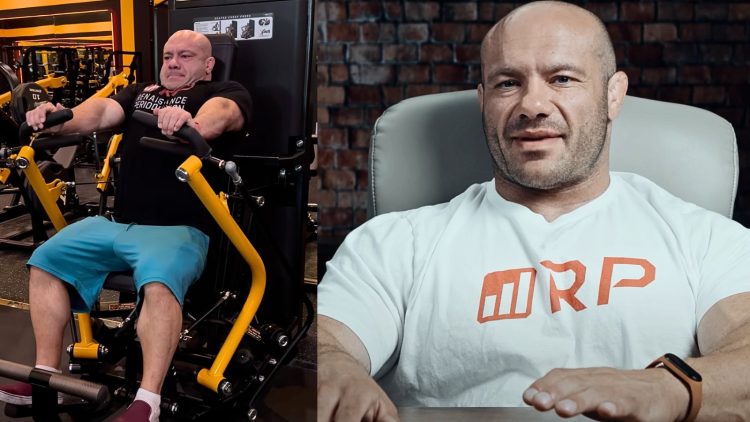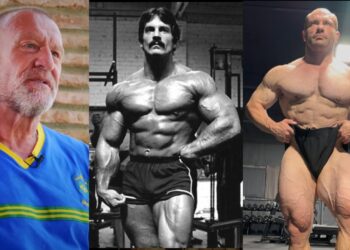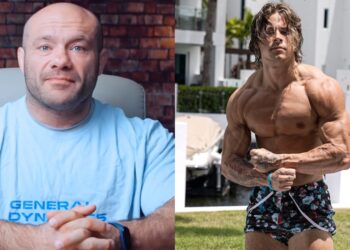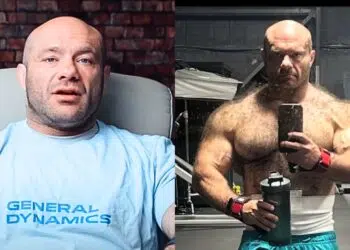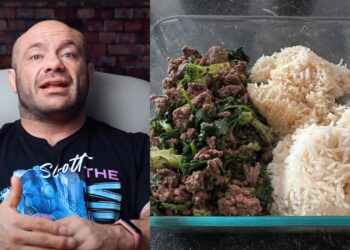If you notice your strength is waning or encounter overtraining fatigue, exercise scientist Dr. Mike Israetel has a simple and easy solution to address these problems. In a recent YouTube video, Israetel explained that if you’re not seeing consistent gains despite sticking to your training schedule, a de-load might be the best option.
Dr. Mike Israetel is the mastermind behind the Renaissance Periodization YouTube channel, which boasts over 1.3 million subscribers. He uses this medium to share insightful workout advice backed by scientific research, studies, and evidence.
For those who are unfamiliar with Dr. Mike Israetel, he earned his Ph.D. in Sports Physiology and has carved out a successful online following, having critiqued celebrities, fitness influencers, and even bodybuilders’ exercise routines. From his top 10 movements for achieving hypertrophy to his views on diet soda and weight gain, Israetel never misses a beat when it comes to relaying fitness knowledge.
De-loads are often comprised of a week-long reduction in weight, volume, and intensity. A de-load can also involve no training at all. Below, Israetel explains when it’s best to dial things back to ensure better muscle gains.
Dr. Mike Israetel Dives Into When It’s the Right Time to De-Load
View this post on InstagramGet Fitter, FasterLevel Up Your Fitness: Join our 💪 strong community in Fitness Volt Newsletter. Get daily inspiration, expert-backed workouts, nutrition tips, the latest in strength sports, and the support you need to reach your goals. Subscribe for free!
Israetel advocates for the use of de-loads for individuals who consistently put in hard work at the gym but do not achieve the desired results. He believes a de-load every few months could make a world of difference for muscle-building efforts.
“If you have fucking gnarly consistency and you’re kind of burning the candle at both ends and it seems like the harder you work the more ground you lose… then backing off, taking all of your –so point number 8.
De-load every few months. Take an easy week of training or no training at all. When you get really tired, do that right now. If you think you are overdoing it and then coming back slice everything in half. Cut all of your volume in half.”
By decreasing volume, intensity, and the number of sets performed, Israetel suggests that better gains may become noticeable immediately.
“You typically do 10 sets of legs, now you do five. Do that low volume for a few weeks. You might actually start getting better gains right away.
And if you think this is really way too low, increase the set here and there just to get it just right so that you get really tired and really sore and when you’re next workout comes up, you’re completely healed and ready to go again.”
Israetel also highlighted the importance of knowing when the body requires rest and recovery before committing to another taxing workout.
“Like yesterday, my chest was sore and now it is not sore at all, triceps are not sore at all, and guess what? In a couple hours here I do my chest and tricep workout, perfect. So I know I’m healing on time but for me, it’s a surprisingly small number of sets that ends up checking the box in many instances. For you, it could be more or fewer sets just make sure that whatever it is you’re training with, start on the low end and work your way up,” explains Dr. Mike Israetel.
Israetel hasn’t been the only person in the fitness and bodybuilding community to advocate for de-loads. Former four-time Mr. Olympia Jay Cutler has also discussed why the strategy is effective for both beginner and intermediate lifters. Cutler prefers to implement a de-load every four weeks, stressing that he drops the weight but maintains the same number of reps.
Overtraining affects the best of us, but Israetel believes de-loading techniques are critical for improved gains. The next time you’re feeling fatigued, try modifying the intensity, duration, rep range, or weight to see if this strategy works for you.
Watch the full video from the Renaissance Periodization YouTube channel below:
https://youtube.com/watch?v=gIXLQEKr4Z4%3Fsi%3DSJz08pj-UMIdTjUN
RELATED: Exercise Scientist Reveals His ‘Hypertrophy Hierarchy’ & If Cheat Reps Help You Build More Muscle

